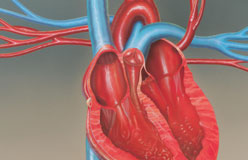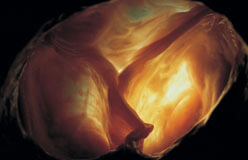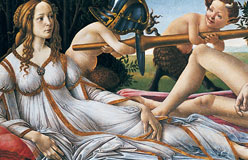Your heart is a pump, and it’s a lot like pumps that humans make.
For a pump to work, it needs a source of energy. You can make a pump work with your hands. That’s mechanical energy. Or you can trigger it with electricity—and that’s how your heart works.
Your heart makes tiny electric sparks. These sparks cause cardiac (heart) muscles to “tense up,” or contract. The contractions (or heartbeats) are steady and regular, thanks to a built-in timer. (What happens if your heart’s timer stops ticking? You can get an artificial one. It’s a box called a pacemaker.)
Although your heart is triggered by electricity, it also has mechanical (moving) parts. Valves open and shut. Muscles squeeze and push. Blood flows through expandable tubes.
The heart pump has one job: to control the flow of liquid. It pumps the liquid uphill against gravity. And it keeps the liquid circulating to all parts of the body.







